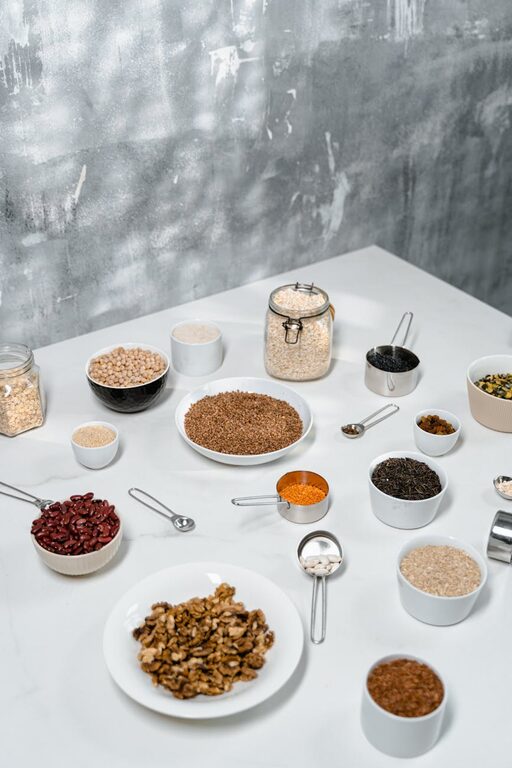Planning meals from pantry staples is a fantastic way to simplify your cooking routine, save money, and reduce food waste. Whether you’ve stocked up during a grocery run or want to clear out your cabinets, using what you already have on hand can inspire creativity in the kitchen. This guide will walk you through the steps of planning meals using pantry staples so you can enjoy easy, nutritious, and satisfying dishes every day.
Why Plan Meals from Pantry Staples?
Pantry staples are non-perishable or long-lasting food items you keep stocked regularly. Examples include canned beans, pasta, rice, dried herbs, spices, canned vegetables, and sauces. When you base your meals on these items, you:
– Save money by avoiding frequent grocery runs
– Lower food waste by using what you have first
– Reduce dinner-time stress and last-minute decisions
– Have versatile ingredients that work in many dishes
Step 1: Take Inventory of Your Pantry
Start by organizing and taking stock of your pantry. Remove everything if needed and group your items by category, such as:
– Grains and pasta (rice, quinoa, pasta)
– Canned goods (beans, tomatoes, vegetables)
– Baking essentials (flour, baking powder, sugar)
– Condiments and sauces (soy sauce, mustard, hot sauce)
– Spices and herbs
– Snacks and nuts
Write down what you have in each category, noting expiration dates so you use older items first. This inventory will be your reference when planning meals.
Step 2: Choose Your Protein Sources
Proteins are important for balanced meals and come in many pantry-friendly forms, including:
– Canned beans and lentils
– Canned tuna, salmon, or chicken
– Peanut butter and nut butters
– Shelf-stable tofu or textured vegetable protein (TVP)
Combine these with grains or vegetables for nutritious meals. For example, a simple dish of canned chickpeas, rice, and spices can become a hearty curry or stew.
Step 3: Build Meals Around Versatile Staples
Use pantry staples that coordinate well together. Classic combinations include:
– Rice + beans + canned tomatoes
– Pasta + canned vegetables + olive oil + garlic
– Lentils + canned coconut milk + curry spices
– Quick soups with broth cubes, noodles, and canned vegetables
Choose ingredients that you enjoy, mix and match, and don’t be afraid to experiment with flavors like cumin, paprika, or dried oregano.
Step 4: Plan for Fresh or Frozen Add-Ins
While pantry staples form the base of your meals, adding fresh or frozen produce can elevate the dish. Keep an eye out for:
– Fresh onions, garlic, and potatoes, which last longer and add flavor
– Frozen vegetables like spinach, peas, or mixed veggies for convenience
– Fresh herbs or lemon juice to brighten flavors
This approach balances convenience with freshness without frequent trips to the store.
Step 5: Create a Weekly Meal Plan Template
Once you’ve listed your staples and possible combinations, sketch a simple meal plan. For example:
– Monday: Pasta with canned tomato sauce and sautéed garlic
– Tuesday: Bean chili with canned beans, spices, and rice
– Wednesday: Lentil soup with canned broth and frozen vegetables
– Thursday: Tuna salad with canned tuna, beans, and olive oil dressing
– Friday: Stir-fried rice with frozen veggies and soy sauce
This structure saves time and helps prevent last-minute cooking stress.
Step 6: Prep Ahead When Possible
Meal prepping helps speed up your weeknight cooking. Consider:
– Cooking large batches of rice or pasta to use throughout the week
– Making sauces or dressings from pantry ingredients in advance
– Pre-chopping vegetables or soaking dried beans overnight
Prep saves time, reduces cleanup, and ensures you’re more likely to use what’s in your pantry.
Step 7: Use Recipes for Inspiration
If you feel stuck, explore recipes designed specifically for pantry staples. Many food bloggers and websites offer creative dishes that rely on common pantry items. Keeping a collection of simple and favorite recipes can spark ideas when planning meals.
Tips to Maximize Your Pantry Cooking Success
– Rotate your stock: Use older items first and replenish with fresh staples regularly.
– Invest in quality spices: They transform simple staples into flavorful dishes.
– Keep basics stocked: Olive oil, salt, pepper, garlic, canned tomatoes, and dried herbs go a long way.
– Stay flexible: Substitute ingredients based on what you have; for example, swap black beans for kidney beans or quinoa for rice.
– Batch cook freeze: Make extra portions and freeze them for quick meals later.
Conclusion
Meal planning from pantry staples is a practical skill that promotes efficient, budget-friendly cooking. By taking inventory, identifying key proteins and versatile ingredients, and organizing your plan, you can create satisfying meals with ease. Pair pantry staples with fresh or frozen additions for balanced flavors and nutrition. With some prep and a few go-to recipes, you’ll enjoy stress-free dinners that utilize what you have on hand. Happy cooking!


